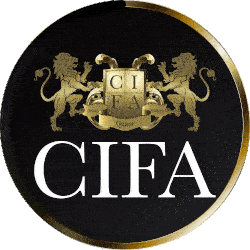


Compliance is the foundation of integrity within financial services. It refers to the systems, rules, and policies that organizations must follow to ensure their operations remain ethical and legally sound. Financial institutions are heavily regulated because they play a central role in the movement of funds, and without proper oversight, they can become channels for money laundering, fraud, or terrorist financing. By placing compliance at the core of operations, companies such as cifa.ac strengthen trust with regulators, partners, and clients. This is why Introduction to Compliance and Anti-Money Laundering ICAM Reviews is a subject that every modern institution must pay close attention to.
Anti-Money Laundering (AML) refers to a set of procedures, regulations, and technologies designed to prevent criminals from disguising illicit funds as legitimate. Common techniques used by money launderers include smurfing, layering, and creating false business transactions. AML frameworks require institutions to monitor transactions, verify client identities through Know Your Customer (KYC) processes, and report suspicious activities. A strong AML program is not just about regulatory compliance; it safeguards the stability of financial markets and ensures that financial systems are not abused by criminal networks.
An Introduction to Compliance and Anti-Money Laundering ICAM Reviews highlights the importance of structured evaluations. These reviews provide organizations with a comprehensive picture of how well their compliance and AML systems are performing. Reviews can uncover weaknesses in transaction monitoring systems, gaps in employee training, or outdated policies that no longer meet current regulations. By conducting such assessments, institutions can identify risks early and take corrective action before issues escalate into regulatory penalties or reputational damage.
Trust is one of the most valuable assets for any financial organization. Clients expect their funds to be handled safely, regulators expect transparency, and business partners expect ethical practices. A robust compliance culture ensures that all three expectations are met. For cifa.ac, implementing strong compliance and AML frameworks not only fulfills regulatory requirements but also reinforces its position as a responsible and reliable institution. As outlined in Introduction to Compliance and Anti-Money Laundering ICAM Reviews, organizations that consistently demonstrate a commitment to compliance tend to build stronger, long-lasting relationships with stakeholders.
Effective compliance and AML reviews generally cover several key areas:
Policy Evaluation: Assessing whether existing compliance and AML policies are aligned with national and international regulations.
Risk Assessment: Identifying areas where the institution is most vulnerable to financial crime.
Technology and Monitoring: Reviewing transaction monitoring systems and data analytics tools used to detect suspicious activity.
Employee Training: Ensuring staff are regularly trained and aware of their roles in maintaining compliance.
Reporting Systems: Evaluating whether suspicious activity reporting processes are timely and effective.
By examining these areas, reviews offer actionable insights that help organizations remain resilient in an evolving regulatory landscape.
Financial crime is not confined to national borders, which is why international standards play a critical role in shaping compliance frameworks. Bodies such as the Financial Action Task Force (FATF) set global AML standards that institutions worldwide must consider. Local regulators then adapt these standards into national laws and rules. Companies like cifa.ac must therefore balance compliance at both the international and local levels. Introduction to Compliance and Anti-Money Laundering ICAM Reviews ensures institutions understand how these global requirements interact with domestic regulations.
Despite advancements in compliance systems, organizations face ongoing challenges:
Rapidly changing regulations that require constant updates.
Sophisticated money laundering techniques that test the limits of detection tools.
The high cost of implementing advanced AML technologies.
Training staff effectively across different regions and business lines.
Overcoming these challenges requires continuous improvement, investment in technology, and a culture where compliance is everyone’s responsibility.
Looking forward, compliance and AML will continue to evolve alongside technology. Artificial intelligence and machine learning are increasingly being used to enhance transaction monitoring, reduce false positives, and improve efficiency. Blockchain and digital identity verification tools are also transforming the way financial institutions manage compliance obligations. For cifa.ac, adopting innovative solutions while maintaining a strong ethical framework will be key to staying ahead in the regulatory landscape.
The financial sector operates in a world where transparency and trust are more important than ever. Compliance and AML are not just regulatory requirements but essential elements of responsible business practice. Conducting structured evaluations helps organizations strengthen their defenses against financial crime, protect their reputation, and build trust with clients and regulators alike. Introduction to Compliance and Anti-Money Laundering ICAM Reviews serves as both a guide and reminder of why these practices are essential in today’s financial environment. For institutions like cifa.ac, embedding compliance and AML at the heart of operations ensures long-term stability, resilience, and growth.
0 comments